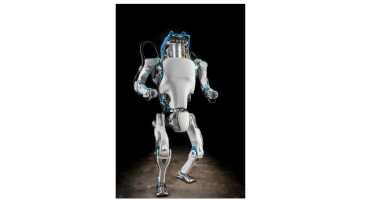- Series:Creation, God’s Design
Genesis 1:26
“And God said, Let us make man in our image, after our likeness: and let them have dominion over the fish of the sea, and over the fowl of the air, and over the cattle, and over all the earth, and over every creeping thing that creepeth upon the earth.”
 When Isaac Asimov wrote his famous robot stories, we all thought we knew what robots looked like. They looked like us. Indeed, many of Asimov’s robots began to look indistinguishable from human beings, such as the iconic R Daneel Olivaw, who partnered with detective Elijah Baley in the sci-fi crime novel The Caves of Steel.
When Isaac Asimov wrote his famous robot stories, we all thought we knew what robots looked like. They looked like us. Indeed, many of Asimov’s robots began to look indistinguishable from human beings, such as the iconic R Daneel Olivaw, who partnered with detective Elijah Baley in the sci-fi crime novel The Caves of Steel.
As real-life robots began to appear in industry, making cars and operating other machinery, they did not look quite so anthropomorphic. Now in the 21st century, self-mobile robots are not necessarily built to walk like people. For example, we have already seen tiny flying robots about the size and shape of a cockroach – and liable to be just as beloved!
A more recent robotic development has seen soft robots built to imitate jellyfish. Two layers of elastic polymer are joined – one stressed and one unstressed. Between the layers, air can be pumped, reversing the stressing and enabling the robot to swim through water. A third stress-free layer provides direction, and the whole machine is able to lift and carry fairly large cargos.
The video accompanying the research shows strips of this robotic material being used out of water as a prehensile grip that would have sensitivity approaching that of human hands.
As with all new technologies, it is to be hoped that good uses are found for it. God has given us dominion over this world, and technological developments, such as the soft robot, are methods by which humans can operate under this divine mandate.
Prayer: Lord, we pray that we, Your people, called by Your Name, might acknowledge You, as we use our talents to take stewardship over this world. Amen.
Author: Paul F. Taylor
Ref: North Carolina State University. “Jellyfish-inspired soft robots can outswim their natural counterparts.” ScienceDaily, 1 July 2020. <www.sciencedaily.com/releases/2020/07/200701151712.htm>. Image: A modern humanoid robot, CC BY-SA 4.0 International.
© 2022 Creation Moments. All rights reserved.
